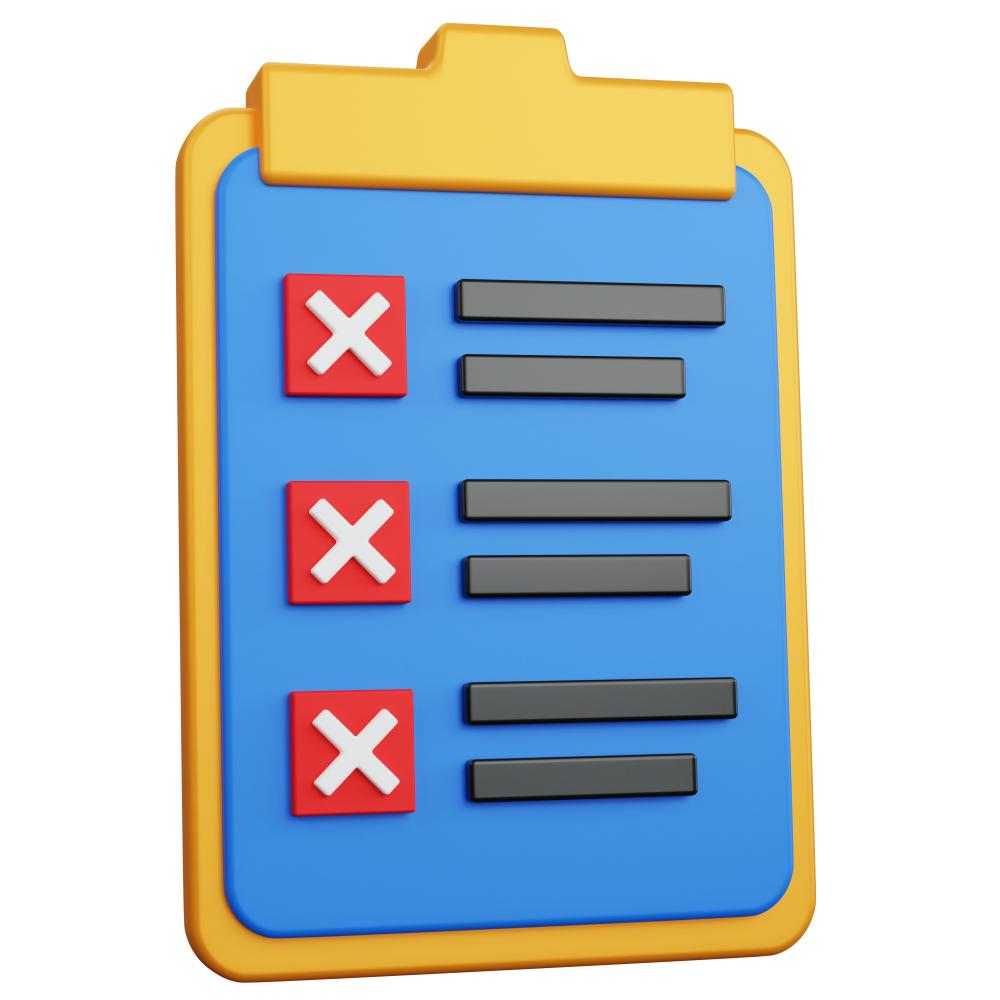Understanding Semrush Domain Rating
The term semrush domain rating is frequently used in SEO circles to denote a site's authority and influence based on its backlink profile. Having worked in the digital marketing industry for over 20 years, I've observed that although not officially endorsed by Google, these metrics often provide a reliable indication of a site's potential to perform well in search engine rankings. Semrush's metrics, much like Ahrefs' Domain Rating (DR), evaluate the quantity and quality of backlinks a site receives. In my experience, these tools offer invaluable insight, especially when strategizing for competitive keywords.
How Does Semrush Domain Rating Work?
The semrush domain rating is calculated using several factors critical to a website's SEO health. Primarily, it involves evaluating the quality of backlinks, which indicate the trustworthiness and authority a site has accrued. A common question I hear is why these scores may fluctuate. Well, they are dynamic, affected by changes in your backlink profile or those of competitors. Here's a simplified breakdown of the process:
- Assess incoming links: Quality over quantity is paramount.
- Evaluate organic traffic metrics: A consistent influx indicates ongoing relevance.
- Monitor for spammy links: These can artificially inflate scores and mislead site owners.
Remember, an optimized backlink strategy, which includes removing unethical links, can provide a noticeable boost to your domain rating.
A strong semrush domain rating can be a powerful asset. Sites with higher ratings typically enjoy better visibility and more traffic, translating into business growth. For businesses navigating competitive markets, a robust domain rating can set you apart, making it easier to capitalize on organic traffic and conversion opportunities. From an SEO perspective, using domain rating as a benchmark lets you identify and pursue high-value backlinks, assess your competitive landscape, and refine content strategies to leverage link equity.
How Can You Improve Your Semrush Domain Rating?
Enhancing your semrush domain rating is crucial for sustainable SEO success. As someone who's seen the landscape evolve, I've advised clients to focus on the following strategies:
- Build quality backlinks: Prioritize earning links from reputable and contextually relevant sites.
- Content optimization: Create and publish engaging content that naturally earns shares and links.
- Network within your industry: Collaborations can lead to valuable link-building opportunities.
- Maintain a clean profile: Regularly audit your site's backlinks to disavow harmful links.
Following these strategies can significantly improve both your domain rating and your overall search visibility.
What Are Common Concerns About Semrush Domain Rating?
Many clients often inquire about the reliability of the semrush domain rating. While these ratings are valuable indicators, they're not infallible. Some common concerns include the accuracy of backlink analysis and the potential for spammy links to skew results. It's prudent to use semrush domain rating as one of many tools in your SEO toolkit, complemented by qualitative analysis and industry-specific insights to ensure a holistic approach.
It's worth noting that while the exact algorithms remain proprietary, the principles of effective link-building and content strategy remain constant, underscoring the importance of foundational SEO practices.
As someone with over two decades in the SEO industry, I've seen the evolution of tools like the moz domain rating checker. It's an invaluable resource for those seeking to understand their website's authority. This tool provides a snapshot of a site's potential to rank, assisting in strategic SEO planning. Whether you're a digital marketer, business owner, or SEO aficionado, integrating the moz domain rating checker into your toolkit can help elevate your digital strategy.
Over time, I've witnessed how leveraging these insights can unveil opportunities for growth. With the moz domain rating checker, understanding your website's standing becomes less of a mystery and more of a data-driven journey toward SEO success.
How to Best Utilize a moz domain rating checker?
To maximize the benefits of the moz domain rating checker, follow these steps:
- Enter Your Domain: Start by inputting your domain into the checker for a quick analysis.
- Review Key Metrics: Focus on Domain Authority and Page Authority metrics to gauge baseline performance.
- Compare Competitors: Evaluate your competitors' scores to position your strategy effectively.
- Identify Improvement Areas: Use insights from the checker to pinpoint areas needing enhancement.
- Implement SEO Strategies: Based on the insights, adjust your SEO approach and monitor progress over time.
What's the Difference Between Domain Rating and Domain Authority?
While both Domain Rating and Domain Authority are crucial, they serve different purposes. Domain Authority, quantified by tools like the moz domain rating checker, focuses on a site's likelihood to rank based on its backlink profile. In contrast, Domain Rating, developed by Ahrefs, emphasizes the quality of referring domains.
From my perspective, understanding both metrics provides a comprehensive view and enhances your ability to strategize effectively.
Common Misconceptions about the moz domain rating checker
Throughout my career, I've noticed some misconceptions about the moz domain rating checker. A frequent one is that a high Domain Authority automatically guarantees top search rankings. While it's indicative, it's not definitive. Search engines consider multiple factors, and link quality holds more weight than sheer quantity.
Furthermore, relying solely on Domain Authority without considering on-page SEO and content relevance can lead to skewed expectations. It's vital to integrate these insights holistically into your overall SEO strategy.
Why Is Domain Rating Important?
Domain Rating (DR) has become a crucial metric in the competitive world of SEO. Within my two-decade journey, I've witnessed the power this rating holds in determining your website's SEO prowess. A high DR, especially in the context of selling domain with high ahrefs rating, can act as a badge of credibility, attracting potential buyers by showcasing a strong backlink profile.
Many businesses often look for domains with high Ahrefs ratings to leverage their established backlink networks. In turn, this helps in achieving quicker SEO rankings, a tactic I've successfully employed in many projects. For potential sellers, enhancing a domain's DR can significantly boost its market value, making it a prime candidate in the digital marketplace.
How Can You Sell a Domain with High DR?
Selling domain with high ahrefs rating involves a few strategic steps. First, ensure your domain's backlink profile is clean and authoritative by removing any low-quality links. Next, list your domain on popular marketplaces that cater to high-DR domains. Include compelling descriptions and analytics showcasing the Ahrefs DR, referring domains, and organic traffic stats.
- Audit your domain's backlinks for quality.
- List on appropriate marketplaces.
- Include robust analytical data in the listing.
- Consider leveraging professional domain brokers for higher reach.
Incorporating these steps can help optimize your domain's appeal, ensuring it stands out in a crowded market.
Challenges in Selling Domains and Their Solutions
During my tenure at Domain Rating IT, I've observed several challenges in selling domain with high ahrefs rating. Misleading DR scores, often inflated by unethical practices, can tarnish a domain's reputation. To combat this, always verify DR data authenticity through trusted Ahrefs tools.
Additionally, market saturation can make it difficult to attract buyers. By creating a unique value proposition and highlighting niche-specific advantages, sellers can distinguish their domains from the competition. Regularly updating listings with fresh data can also catch potential buyers' attention more effectively.
What Qualifies as a High Domain Rating?
A high domain rating typically starts from 60 and above, indicating a robust backlink profile. However, for selling domain with high ahrefs rating, a DR above 70 is often desired for significant market appeal.
This threshold showcases a domain's established authority and its potential for faster SEO results. Elevated DR levels are achieved through high-quality backlinks from well-known sites, consistent content updates, and avoiding toxic backlinks.
- Ensure a majority of high DR backlinks.
- Maintain regular, relevant content updates.
- Continuously monitor and remove harmful backlinks.
What Are Effective Strategies to Improve Domain Rating?
Improving your domain rating involves diligent efforts. Start by analyzing your current backlink profile to identify strengths and weaknesses. Seek partnerships with high-authority sites for guest posts, an approach I've championed for years to boost Ahrefs ratings successfully.
Another key strategy is regularly publishing high-quality content that naturally attracts backlinks, thereby enhancing your DR over time. Participate in industry conferences and webinars to establish your domain as a thought leader. These efforts not only improve your domain's DR but also contribute to long-term growth and sustainability.
How does the Semrush Domain Rating differ from Domain Authority?
The Semrush Domain Rating is all about evaluating the quality of a site's backlink profile, while Domain Authority, typically associated with Moz, scores a domain based on its potential to rank in search engines. While both metrics aim to provide insight into a site's SEO strength, they differ in their approach. Semrush focuses more on the actual authority of referring domains, whereas Moz considers multiple factors, including total link count and various other site metrics. Understanding these differences can help you tailor your SEO strategy effectively. In my own experience, leveraging both metrics can create a more comprehensive understanding of your domain's online presence. Have you ever used both tools simultaneously to guide your strategy?
Why is the Semrush Domain Rating important for SEO success?
Semrush Domain Rating plays a crucial role in SEO because a higher rating often correlates with better search visibility and traffic. From my perspective, a strong Domain Rating acts as a signal to search engines that a site is trustworthy and reputable. This can help you outpace competitors in search rankings. I've seen clients rise in search results simply by enhancing their backlink profile, which in turn boosts their Domain Rating. It's like building a resume; the more quality references you have, the stronger your position becomes. What steps have you found most successful in improving your site's rating?
Why might a site's Semrush Domain Rating fluctuate over time?
Fluctuations in your Semrush Domain Rating are generally due to changes in your backlink profile. This includes gaining or losing high-quality links or a competitor's changes affecting the overall landscape. I remember one client who saw a significant drop after several of their backlinks from reputable sites were removed. Such shifts can be disconcerting, but they also highlight the importance of continuously building and maintaining strong links. Have you noticed any patterns in how your site's rating changes over time?
What are the benefits of using a Moz Domain Rating checker in conjunction with Semrush tools?
Utilizing a Moz Domain Rating checker alongside Semrush tools provides a holistic view of your website's authority. Moz offers insights into Domain Authority, while Semrush provides detailed backlink analytics. Combining these tools allows you to identify areas for improvement and benchmark progress against competitors. I've found that using both can highlight discrepancies or opportunities that one tool alone might miss. Have you compared results from different tools, and what insights did you gain?
What strategies should be considered when selling a domain with a high Domain Rating?
Selling a domain with a high Domain Rating can be lucrative, but it requires some strategic steps. First, ensure your domain's backlink profile is clean by removing spammy links. Then, present potential buyers with clear analytics showing the domain's strength. I once assisted a client in listing their high-DR domain by emphasizing its established backlink network, which ultimately attracted more attention and a higher sale price. Have you explored specific markets or platforms that cater to high-DR domains?
What are some effective strategies to improve your Semrush Domain Rating?
To improve your Semrush Domain Rating, focus on acquiring high-quality backlinks from reputable sources. Engaging in guest blogging, creating shareable content, and building relationships within your industry are all effective strategies. I remember implementing a content partnership for a client that resulted in multiple reputable backlinks, significantly boosting their Domain Rating. What tactics have you found most effective in generating high-quality backlinks for your site?
How accurate is the Semrush Domain Rating in reflecting a site's actual authority?
The Semrush Domain Rating is a reliable metric, but it should not be the sole measure of a site's authority. It's based on current backlink data, which is a significant factor in SEO, but other elements like on-page SEO and content relevance also play a role. I've seen sites with moderate Domain Ratings outperform those with higher ones due to superior content and on-page optimization. It's essential to use Domain Rating as part of a broader SEO strategy. How do you currently measure the success of your site's SEO efforts?
What are common misconceptions about the Semrush Domain Rating?
A frequent misconception is that a high Semrush Domain Rating guarantees top search rankings. While it indicates a strong backlink profile, other factors like content quality and user experience are equally important. I've seen many businesses focus solely on raising their Domain Rating without considering these other critical components, often leading to unmet expectations. Have you ever focused on one SEO metric only to realize other factors were just as crucial?
How can I best integrate the Semrush Domain Rating tool into my existing SEO toolkit?
Integrating the Semrush Domain Rating tool into your SEO toolkit involves regularly monitoring your domain's rating and analyzing changes in your backlink profile. Use the insights to adjust strategies, pursue quality link-building opportunities, and keep an eye on competitors. I suggest creating a routine checkpoint every few months to reassess your site's performance and adapt accordingly. How often do you review your site's SEO metrics, and what tools do you rely on?


